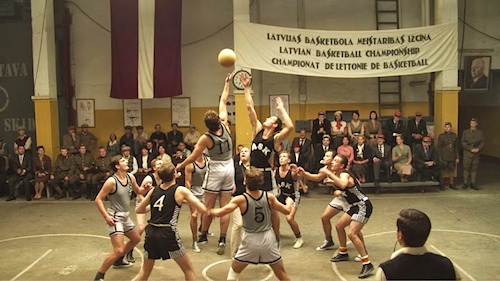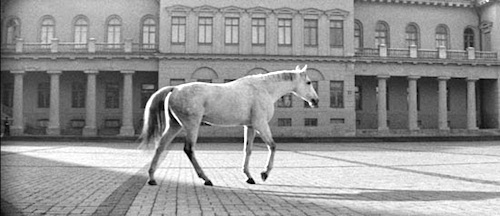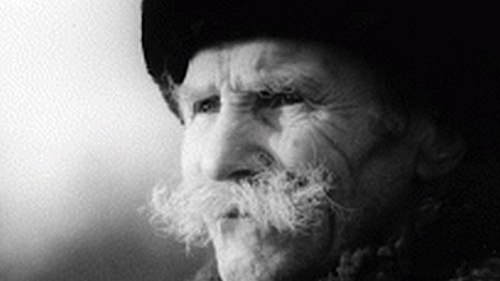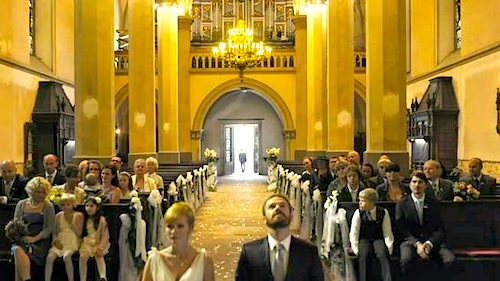By Joe Bendel. Fifty-some years after the classic Twilight Zone episode, aliens are still devising ways to serve man, with a little butter and garlic. However, viewers of Jonathan Glazer’s much anticipated new film will be forgiven if they do not realize that this is the extraterrestrials’ reason for visiting Scotland. Mood and composition take precedence over petty bourgeoisie concerns, like narrative and pacing, throughout Glazer’s Under the Skin, which opened Friday in New York.
Fortunately, Skin is ostensibly based on the novel by Michel Faber, so we can infer some exposition from the original source material. It seems aliens have a taste for human muscle, so the woman visitor has been sent to harvest some from the brawniest knuckle-draggers she can entice into the back of her van. Sometimes she appears to have a counterpart escorting her on his motorbike, but he disappears for long stretches (probably because he gets bored).
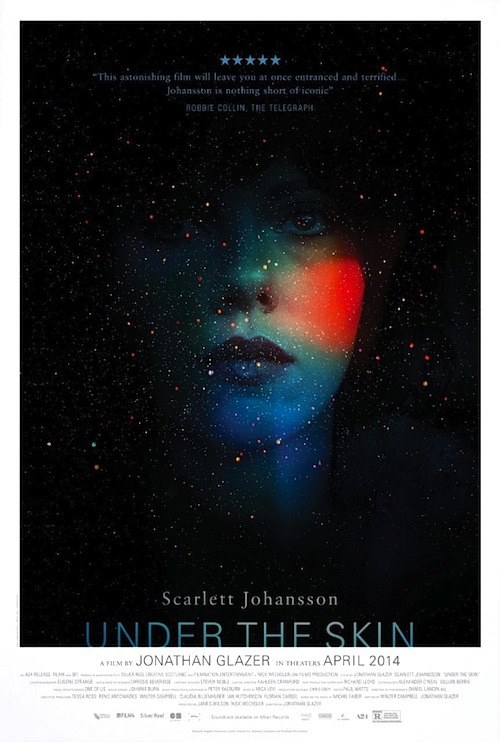 At first, she seems ruthlessly efficient, but as she encounters the less fortunate, she starts to change. Yet, becoming more “human” leaves her increasingly vulnerable to man’s inhumanity towards his fellow man. Or something like that.
At first, she seems ruthlessly efficient, but as she encounters the less fortunate, she starts to change. Yet, becoming more “human” leaves her increasingly vulnerable to man’s inhumanity towards his fellow man. Or something like that.
There is not a heck of a lot of plot in Skin, but what there is manages to be both slow and confusing. About the third or fourth time she lures another man-dog into her cosmic pool of black goo, you start to wonder how this film ever got made without Tangerine Dream on-board. There are more wide shots of cloud draped forests than both seasons of Twin Peaks combined. Frankly, it is hard to believe this is the work of Glazer, arguably the most lauded television commercial director of our time and the man who helmed the breakout hit, Sexy Beast.
It is also hard to get one’s head around the wildly unflattering wig Scarlett Johansson sports as the primary alien. Frankly, this is Johansson as we have never seen her before: naked, yet boring. There is no question Skin is more closely akin to experimental cinema than science fiction genre films, but it sounds deceptively commercial: “nude alien chick puts men through the interstellar meat-grinder.” It will surely attract a loyal band of critical champions who will defend it with terms like “hypnotic” and “trance-inducing,” which sounds seductive, but really means you will be paying fourteen dollars to fight off the head-nods.
In many ways, Skin feels like a throwback to the sort of weirdly cerebral 1970s science fiction forays (such as Robert Altman’s Quintet and Nicholas Roeg’s The Man Who Fell to Earth) that were green-lighted by clueless studio heads caught flat-footed by the Star Wars phenomenon, but Skin is more openly contemptuous of mainstream sensibilities. For a while, Daniel Landin’s gauzy cinematography is rather effectively dreary, in a way befitting Scotland’s backwoods, but the film simply becomes a chore to watch. Not recommended for anyone except Johnasson stalkers and the most pretentious hipster cineastes, Under the Skin opened Friday (4/4) in New York at the AMC Empire.
LFM GRADE: D
Posted on April 7th, 2014 at 6:05pm.

